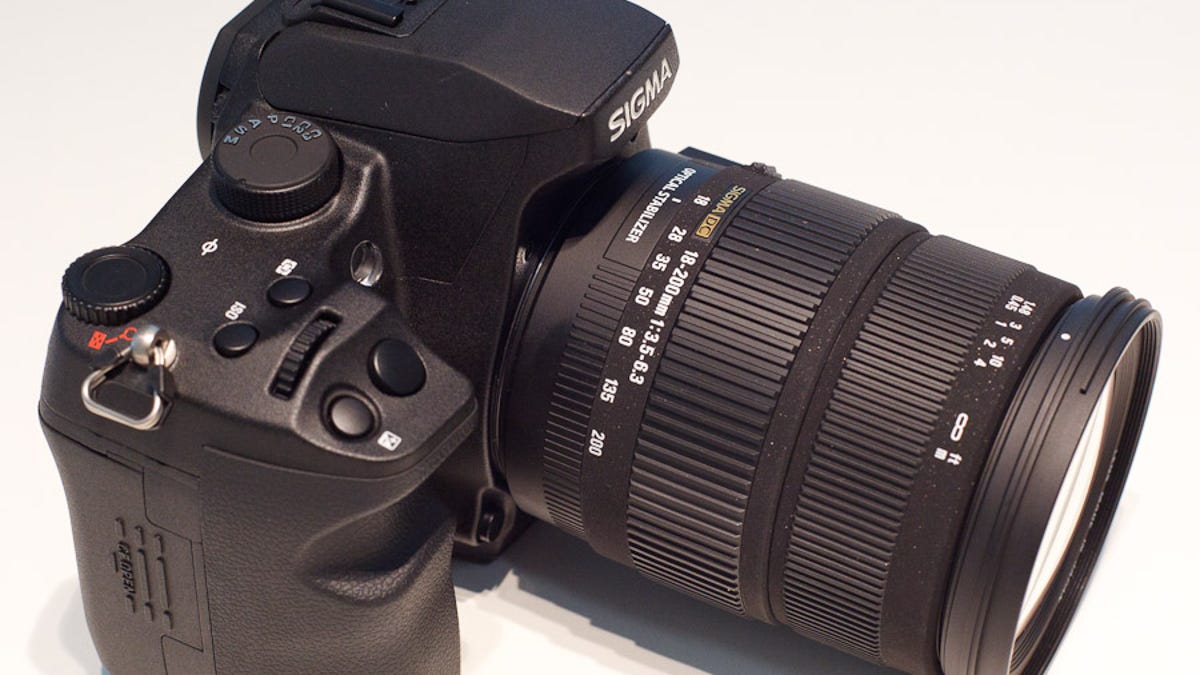Sigma SD1: Wait, did we say $9,700? We meant $3,300
Saying it improved manufacturing, the Japanese camera and lens maker will start selling a lower-priced SLR in March. Also: perks for those who paid the high price.

Sigma has radically repriced its SD1 camera, saying manufacturing improvements let it lower the unusual SLR's cost by two-thirds to $3,300.
Sigma introduced the SD1 in 2011 with a premium price of $9,700--chiefly for its Foveon sensor, given that other specifications were ordinary. Although the sensor is small, about the size of those on mainstream SLRs from Nikon and Canon, it has the unusual ability to capture red, green, and blue light values for each pixel, not just a single color as with conventional sensors.
The Foveon design therefore can produce better detail, at least theoretically, because the camera doesn't need to make up the missing data values for a pixel that in reality captures only one of the three colors. To try to spotlight this difference and make its camera compare more favorably to conventional models, it called its 15.4 megapixel Foveon a 46-megapixel sensor and said it matches the resolution of a 30-megapixel traditional design.
Of course, 46 megapixels is a lot--a number only found in medium-format camera territory these days, though Nikon's new D800 gets close at 36 megapixels. Sigma priced the camera in medium-format territory, too--about that of the Pentax 645D.
Alas, it didn't live up to the price. Medium-format afficionado Michael Reichmann said in his SD1 review that he liked the Sigma's ability to capture fine detail, but he couldn't recommend it overall. "The Pentax 645D is in another league. The SD1 is no competitor to even the lower end of the current medium format market," Reichmann said.
In announcing the lower price, Sigma this week said the price was not what the company wanted. Sigma Chief Executive Kazuto Yamaki said in a statement:
We could not solve issues related to some of the manufacturing methods before the start of mass production, and the production cost ended up substantially exceeding our originally expected price. As a result, we had no choice but to set the price of the Sigma SD1 high. This caused great discouragement to all of you who looked forward to its release, and wished to experience the very unique image quality of the Sigma SD1 in person; this has become our biggest disappointment and pain.
Since then, overcoming this situation has become the first priority for us and Foveon, and we have together made improvements to reduce production cost substantially. Even though this effort took nearly a year, at last, we achieved a reduction target close to the price we originally planned. Therefore, we decided to release Sigma SD1 as a new product, and were able to make our recent announcement.
The Japanese company also announced a new name for the camera, the SD1 Merrill, after the co-creator of the Foveon sensor, Dick Merrill. The new model will go on sale in March but is identical to the existing SD1.
A big price cut is helpful for future sales, no doubt, but not for those customers who paid the earlier, high price.
For that reason, Sigma will offer a deal on other Sigma products to those customers. Yamaki said:
We fully understand that it is not acceptable to current Sigma SD1 users that a new product with exactly the same specifications as their camera is being released with a substantially revised price a year later. After all, those customers committed to purchasing the Sigma SD1 with great expectations.
During this period, we have seriously considered how we can express our appreciation for our Sigma SD1 customers. Currently, we have a plan to offer a support program for current Sigma SD1 owners. This support program will provide points that can be exchanged for our products. This program is expected to be valid after the release of Sigma SD1 Merrill and it will last until the end of this year, 2012. It will be applicable for all Sigma products including both current and new products to be released this year. More details will be available soon; we appreciate your kind understanding as we finalize this program.
It's unfortunate that the Foveon sensors haven't fared better so we could have some better competition for traditional Bayer-pattern sensors, but Sigma's making the best of a bad situation.
Via Imaging Resource.

